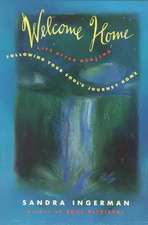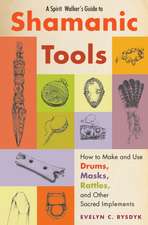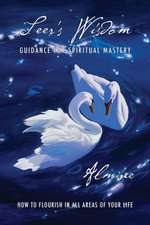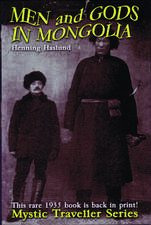The Nepalese Shamanic Path: Practices for Negotiating the Spirit World
Autor Evelyn C. Rysdyk Cu Bhola Nath Banstola Cuvânt înainte de Sandra Ingermanen Limba Engleză Paperback – 21 mar 2019
An experiential guide to the shamanic spiritual practices of the Himalayas shared by a 27th-generation Nepalese shaman
There are few areas of our world where shamanic traditions have been preserved in their original context and form. Nepal is one of these rare and special places. In the shadow of the Himalayas Nepalese shamans, known as dhamis or jhankris, are still consulted for healing and divination, as well as for providing comfort and maintaining harmony. Following the devastating earthquake in Nepal in 2015, shamanic teacher Evelyn Rysdyk and 27th-generation dhami Bhola Nath Banstola decided it was time to safeguard Nepalese shamanic knowledge for future generations by recording the practices in a book.
With this comprehensive, experiential guide to the ancient spiritual traditions of Nepal, Rysdyk and Banstola present step-by-step instructions for authentic Himalayan shamanic practices, including techniques for physical and spiritual healing, shamanic journeys, and advanced ceremonies, such as the Kalchakra Katne, a shamanic ritual for removing toxic energies from an individual. They include exercises to help you meet the ancestors in your shamanic lineage, techniques to use your voice as a shamanic tool, and practices for negotiating the spirit world safely.
Illustrated with photos and Rysdyk’s artwork, the book also explores the history of Nepal, its culture and myths, and the different ways Nepalese shamans serve their communities. Written specifically to share the traditional Himalayan shamanic method with the Western world, this guide not only preserves these ancient teachings but also reveals how they are still relevant in the modern world.
There are few areas of our world where shamanic traditions have been preserved in their original context and form. Nepal is one of these rare and special places. In the shadow of the Himalayas Nepalese shamans, known as dhamis or jhankris, are still consulted for healing and divination, as well as for providing comfort and maintaining harmony. Following the devastating earthquake in Nepal in 2015, shamanic teacher Evelyn Rysdyk and 27th-generation dhami Bhola Nath Banstola decided it was time to safeguard Nepalese shamanic knowledge for future generations by recording the practices in a book.
With this comprehensive, experiential guide to the ancient spiritual traditions of Nepal, Rysdyk and Banstola present step-by-step instructions for authentic Himalayan shamanic practices, including techniques for physical and spiritual healing, shamanic journeys, and advanced ceremonies, such as the Kalchakra Katne, a shamanic ritual for removing toxic energies from an individual. They include exercises to help you meet the ancestors in your shamanic lineage, techniques to use your voice as a shamanic tool, and practices for negotiating the spirit world safely.
Illustrated with photos and Rysdyk’s artwork, the book also explores the history of Nepal, its culture and myths, and the different ways Nepalese shamans serve their communities. Written specifically to share the traditional Himalayan shamanic method with the Western world, this guide not only preserves these ancient teachings but also reveals how they are still relevant in the modern world.
Preț: 90.57 lei
Preț vechi: 117.97 lei
-23% Nou
Puncte Express: 136
Preț estimativ în valută:
17.33€ • 18.03$ • 14.31£
17.33€ • 18.03$ • 14.31£
Carte disponibilă
Livrare economică 28 martie-09 aprilie
Livrare express 08-14 martie pentru 61.02 lei
Preluare comenzi: 021 569.72.76
Specificații
ISBN-13: 9781620557945
ISBN-10: 1620557940
Pagini: 360
Ilustrații: Includes 8-page color insert and 43 b&w illustrations
Dimensiuni: 152 x 229 x 25 mm
Greutate: 0.57 kg
Editura: Inner Traditions/Bear & Company
Colecția Destiny Books
ISBN-10: 1620557940
Pagini: 360
Ilustrații: Includes 8-page color insert and 43 b&w illustrations
Dimensiuni: 152 x 229 x 25 mm
Greutate: 0.57 kg
Editura: Inner Traditions/Bear & Company
Colecția Destiny Books
Notă biografică
Evelyn C. Rysdyk is an internationally recognized shamanic healer, teacher, speaker, and author of several books, including The Norse Shaman and A Spirit Walker’s Guide to Shamanic Tools. Teaching advanced experiential shamanism through her organization, Spirit Passages, she finds creative inspiration and renewal on the coast of Maine. Bhola Nath Banstola is a 27th-generation Nepalese shaman, or jhankri. With his wife, he teaches traditional Himalayan shamanic practices in Europe and North America and leads groups on shamanic tours of Nepal. He divides his time between Italy and Nepal.
Extras
Part 1: Awakening
Chapter 1: Everything Has a Beginning
For the Nepalese shamanic initiate, the calling to the path (deuta-aunu) can happen in one of four ways. The first method is the calling of blood, that is the ancestral call that comes from one’s place in a shamanic family. In this case, an initiate may be taught from childhood by another family dhami/jhankri or develop shamanic gifts later in life by becoming possessed by a shamanic ancestor or an ancestral shaman’s helping spirits.
The second calling is through a sudden and unexplained spiritual illness that overcomes the person receiving the call. This can occur anytime from childhood forward. The strange illness doesn’t respond to treatment and sometimes the initiates enter a kind of spiritual battleground in which they must choose to follow the path or succumb to their malady.
A third path of becoming a shaman, and often the most common way to the path for us in our Western culture, is by following dreams and or visions that lead a prospective candidate to seek a human teacher.
The fourth way of receiving the call is to be kidnapped by the primordial shaman, Banjhankri. (In the mountain regions of Nepal, Banjhankri is also known as Banaskhandi, “he who dwells in the plant kingdom.”) It is from this being that the term jhankri--one of the most common designations for a shaman--is derived. (The Nepali shamanic worldview is so complex that there are myriad designations for a person we would simply refer to as a “shaman.”) This male being dwells in a wilderness cave with his fierce spouse, Banjhankrini. These characters are spiritual beings who are also said to have a partly human/ partly animal physical aspect. The power of having a tripartite aspect of spiritual/divine, animal, and human is known as Tri-Khandi in Nepali. This means that which lives in and beyond the three realms of existence.
Banjhankri is typically described as a dwarf three to nearly five feet tall. His size is not his most unusual aspect, however. Except for his face and palms, he is completely covered with golden or reddish hair, which grows upward rather than downward over his body. In the fashion of Shiva and some Hindu sadhus, Banjhankri’s hair is coiled on top of his head so that it rises into a topknot. His feet are oriented backwards on his legs so that his footprints appear to be headed in the opposite direction from his progress through the forest. He is sometimes depicted with a pail of fresh milk that indicates his clarity and purity as a sacred teacher or guru for the shaman.
In counterpoint to Banjhankri’s light aspect, his wife/consort is an expression of wildness and ferocity. An encounter with the formidable, Banjhankrini is one fraught with danger. Where her husband is small, she is over twelve feet tall. She appears to be part bear, part giant ape, and part human. She is covered in a pelt of long, thick black hair and has long teeth and sharp claws. Banjhankrini also brandishes knives for her work. One is the Nepalese khukuri, a kind of short machete with an inward curing blade made famous by the fierce Gurkha warriors of Nepal. The others are two khurungi. These are small, sharp hand-sickles typically wielded by female deities. These are spiritual versions of the hasiya or small, sharp hand-sickles typically used by women for cutting grass. She also carries iron blacksmith’s tongs for handling hot cooking vessels or coals from the hearth and wears a bamboo gathering basket on her back. As with other spirits, the same figure seen and perceived by one person can be perceived and experienced differently by another.
This fantastic couple operates in unison to teach the initiate in that they represent the two faces of the power found in the natural and spiritual realms. They represent the cosmic dualities of order and chaos, creation and destruction, lawful and taboo, domestic and wild. Without Banjhankrini’s dark aspect, Banjhankri’s light could not be revealed. And without his patient and structured teaching the forces of dismemberment or dissolution would prevail.
The shaman must learn how to tread the line that holds these opposing energies in harmony. When contained and balanced by a skillful and virtuous practitioner, spiritual energies may be used to heal and create harmony. On the other hand, if a shaman is not balanced within herself or himself and power is mishandled, it may sow discord, create strife or illness, and consume the shaman’s mind and/or body. Indeed, any kind of power can be harmful when it is wielded without clarity and integrity.
Chapter 1: Everything Has a Beginning
For the Nepalese shamanic initiate, the calling to the path (deuta-aunu) can happen in one of four ways. The first method is the calling of blood, that is the ancestral call that comes from one’s place in a shamanic family. In this case, an initiate may be taught from childhood by another family dhami/jhankri or develop shamanic gifts later in life by becoming possessed by a shamanic ancestor or an ancestral shaman’s helping spirits.
The second calling is through a sudden and unexplained spiritual illness that overcomes the person receiving the call. This can occur anytime from childhood forward. The strange illness doesn’t respond to treatment and sometimes the initiates enter a kind of spiritual battleground in which they must choose to follow the path or succumb to their malady.
A third path of becoming a shaman, and often the most common way to the path for us in our Western culture, is by following dreams and or visions that lead a prospective candidate to seek a human teacher.
The fourth way of receiving the call is to be kidnapped by the primordial shaman, Banjhankri. (In the mountain regions of Nepal, Banjhankri is also known as Banaskhandi, “he who dwells in the plant kingdom.”) It is from this being that the term jhankri--one of the most common designations for a shaman--is derived. (The Nepali shamanic worldview is so complex that there are myriad designations for a person we would simply refer to as a “shaman.”) This male being dwells in a wilderness cave with his fierce spouse, Banjhankrini. These characters are spiritual beings who are also said to have a partly human/ partly animal physical aspect. The power of having a tripartite aspect of spiritual/divine, animal, and human is known as Tri-Khandi in Nepali. This means that which lives in and beyond the three realms of existence.
Banjhankri is typically described as a dwarf three to nearly five feet tall. His size is not his most unusual aspect, however. Except for his face and palms, he is completely covered with golden or reddish hair, which grows upward rather than downward over his body. In the fashion of Shiva and some Hindu sadhus, Banjhankri’s hair is coiled on top of his head so that it rises into a topknot. His feet are oriented backwards on his legs so that his footprints appear to be headed in the opposite direction from his progress through the forest. He is sometimes depicted with a pail of fresh milk that indicates his clarity and purity as a sacred teacher or guru for the shaman.
In counterpoint to Banjhankri’s light aspect, his wife/consort is an expression of wildness and ferocity. An encounter with the formidable, Banjhankrini is one fraught with danger. Where her husband is small, she is over twelve feet tall. She appears to be part bear, part giant ape, and part human. She is covered in a pelt of long, thick black hair and has long teeth and sharp claws. Banjhankrini also brandishes knives for her work. One is the Nepalese khukuri, a kind of short machete with an inward curing blade made famous by the fierce Gurkha warriors of Nepal. The others are two khurungi. These are small, sharp hand-sickles typically wielded by female deities. These are spiritual versions of the hasiya or small, sharp hand-sickles typically used by women for cutting grass. She also carries iron blacksmith’s tongs for handling hot cooking vessels or coals from the hearth and wears a bamboo gathering basket on her back. As with other spirits, the same figure seen and perceived by one person can be perceived and experienced differently by another.
This fantastic couple operates in unison to teach the initiate in that they represent the two faces of the power found in the natural and spiritual realms. They represent the cosmic dualities of order and chaos, creation and destruction, lawful and taboo, domestic and wild. Without Banjhankrini’s dark aspect, Banjhankri’s light could not be revealed. And without his patient and structured teaching the forces of dismemberment or dissolution would prevail.
The shaman must learn how to tread the line that holds these opposing energies in harmony. When contained and balanced by a skillful and virtuous practitioner, spiritual energies may be used to heal and create harmony. On the other hand, if a shaman is not balanced within herself or himself and power is mishandled, it may sow discord, create strife or illness, and consume the shaman’s mind and/or body. Indeed, any kind of power can be harmful when it is wielded without clarity and integrity.
Cuprins
Foreword by Sandra Ingerman
Our Prefaces
INTRODUCTION
The Shamanic State of Consciousness
Journeying Basics for Beginners: The Shamanic Bridge between Worlds
PART 1
Awakening
1 Everything Has a Beginning
Journey to Meet Banjhankri and Banjhankrini
2 Shamanic Awakening Is a Continual Process
Journey to Meet a Shamanic Ancestor to Ask for Empowerment
3 Dedicating Yourself to the Spirits
Journey to Experience a Personal Dedication Ceremony
4 The Four Aspects of the Human Soul
Journey to Have a Nepalese Shamanic Experience of Your Soul
PART 2
Flowering
5 Shamanic Sacred Tools and Ritual Objects
6 The Khurpa/Phurba
Journey to Clear and Empower Your Khurpa
7 Using Your Khurpa
Khurpa Mudras
8 The Dhyangro
Journey to Clear and Empower Your Dhyangro and Gajo
9 Aina: The Shaman’s Mirror
Journey to Clear and Empower Your Aina
10 The Mala
Journey to Clear and Empower Your Mala
11 The Trishula or Trident
Journey to Clear and Empower Your Trishula
12 Consecrating Shamanic Tools and Creating the Dhami/Jhankri Altar Awakening and Consecrating Your Shamanic Altar
13 The Dhami/Jhankri’s Costume
Journey to Receive a Vision of Ceremonial Attire
14 Working within the Nepalese Cosmology
Honoring the Elementals with Drumming and Dance
15 Ritual of Spring and Renewal
Creating a Renewal Ceremony
16 Using Your Voice as a Shamanic Tool
Giving Voice to Your Shamanic Practice
PART 3
Bountiful Harvest
17 The Cosmic Plan
The Mansaune Ceremony
18 Primary Feminine Deities
Journey to Meet Aspects of the Divine Mother Durga
Journey to Meet Kali
Journey to Meet the Divine Mother as Our Earth
19 Primary Masculine Deities
Journey to Meet Gannyap
Journey to Meet Shiva
Journey to Meet Vajrakilaya
20 Hanuman the Monkey God
Journey to Meet Hanuman
21 The Nagas
Journey to Meet the Nagas
Journey to Meet Nagakanya
22 Garuda
Journey to Meet Garuda
23 Local Deities, Protectors, Ancestral Guardians
Journey to Meet the Spirit of a Local Landscape Feature
Journey to Meet Your Protective Spirits
PART 4
Healing through Our Connections to All That Is
24 The Eight Fetters
25 Healing and Empowerment through Ceremony
The Khardga Puja Ceremony
26 Other Purifying Rituals
27 The Shamanic Ransom Ritual
The Kalchakra Katne Ceremony
28 Honoring Our Relationship with the Cosmos
The Graha Sarne Ceremony
CONCLUSION
Spiritual and Emotional Unification
Acknowledgments
APPENDIX
Celebrating Durga and the Customs of Dashain
Glossary
Index
About the Authors
Our Prefaces
INTRODUCTION
The Shamanic State of Consciousness
Journeying Basics for Beginners: The Shamanic Bridge between Worlds
PART 1
Awakening
1 Everything Has a Beginning
Journey to Meet Banjhankri and Banjhankrini
2 Shamanic Awakening Is a Continual Process
Journey to Meet a Shamanic Ancestor to Ask for Empowerment
3 Dedicating Yourself to the Spirits
Journey to Experience a Personal Dedication Ceremony
4 The Four Aspects of the Human Soul
Journey to Have a Nepalese Shamanic Experience of Your Soul
PART 2
Flowering
5 Shamanic Sacred Tools and Ritual Objects
6 The Khurpa/Phurba
Journey to Clear and Empower Your Khurpa
7 Using Your Khurpa
Khurpa Mudras
8 The Dhyangro
Journey to Clear and Empower Your Dhyangro and Gajo
9 Aina: The Shaman’s Mirror
Journey to Clear and Empower Your Aina
10 The Mala
Journey to Clear and Empower Your Mala
11 The Trishula or Trident
Journey to Clear and Empower Your Trishula
12 Consecrating Shamanic Tools and Creating the Dhami/Jhankri Altar Awakening and Consecrating Your Shamanic Altar
13 The Dhami/Jhankri’s Costume
Journey to Receive a Vision of Ceremonial Attire
14 Working within the Nepalese Cosmology
Honoring the Elementals with Drumming and Dance
15 Ritual of Spring and Renewal
Creating a Renewal Ceremony
16 Using Your Voice as a Shamanic Tool
Giving Voice to Your Shamanic Practice
PART 3
Bountiful Harvest
17 The Cosmic Plan
The Mansaune Ceremony
18 Primary Feminine Deities
Journey to Meet Aspects of the Divine Mother Durga
Journey to Meet Kali
Journey to Meet the Divine Mother as Our Earth
19 Primary Masculine Deities
Journey to Meet Gannyap
Journey to Meet Shiva
Journey to Meet Vajrakilaya
20 Hanuman the Monkey God
Journey to Meet Hanuman
21 The Nagas
Journey to Meet the Nagas
Journey to Meet Nagakanya
22 Garuda
Journey to Meet Garuda
23 Local Deities, Protectors, Ancestral Guardians
Journey to Meet the Spirit of a Local Landscape Feature
Journey to Meet Your Protective Spirits
PART 4
Healing through Our Connections to All That Is
24 The Eight Fetters
25 Healing and Empowerment through Ceremony
The Khardga Puja Ceremony
26 Other Purifying Rituals
27 The Shamanic Ransom Ritual
The Kalchakra Katne Ceremony
28 Honoring Our Relationship with the Cosmos
The Graha Sarne Ceremony
CONCLUSION
Spiritual and Emotional Unification
Acknowledgments
APPENDIX
Celebrating Durga and the Customs of Dashain
Glossary
Index
About the Authors
Recenzii
“The collaboration of Rysdyk and Banstola has created a compelling read--one that my inner anthropologist recognizes as an ethnography. These two visionaries, Western and Traditional, have given us a look into a non- Western cultural tradition that few of us know about. My inner understanding of myself and my world has been enhanced in response.”
“This book is an accessible chronicle of esoteric cosmology and ritual that preserves the wisdom ways of an ancient people. The abundant and detailed practices and ceremonies that are presented in this book, which might otherwise be lost, make the spirits come alive for the modern practitioner. This is a generous and enduring work.”
“If you’ve been intimidated by the intricate and complex cosmology associated with Nepalese shamanism, this is the book that will walk you through it intelligently, gracefully, and comprehensively. This is an important book to add to the growing effort to preserve indigenous shamanism.”
“This inspirational book reveals the heart of the Nepalese shamanic tradition, showing the essential art of fastening heaven to Earth and releasing all beings from the bondage of the eight fetters by restoring health and harmony to sick people and disenchanted places with loving grace.”
“Brilliant shamanic healer and teacher Evelyn Rysdyk has joined forces with Nepalese wisdomkeeper Bhola Banstola to bring us this amazing offering of the ancient practices of Himalayan shamanism. These ancient practices offer a transformation for you, your community, and the world.”
“Rysdyk and Banstola offer us a profound merging of ancient Nepalese wisdom and modern understanding, through which we may learn to ride the razor’s edge between chaos and order that is the dhami/jhankri’s path to shamanic empowerment.”
“An astoundingly practical workbook and doorway into the ancient Nepalese shamanic tradition. A book we have waited for for a long time. Rysdyk and Banstola have given us a great gift!”
“A big bow of gratitude for this important and captivating book that combines fascinating stories of transcendent initiations into the author’s twenty-seventh-generation Nepalese lineage and step-by-step instructions of ceremonies applicable to all shamanic lineages. This book touched my heart!”
“How lucky to have such knowledgeable and generous guides as Evelyn Rysdyk and Bhola Nath Banstola to lead us on this fascinating journey to explore the ancient spiritual wisdom and ritual practices of Nepalese shamanism.”
“This is an inspiring and vital gathering of unique wisdom nuggets and useful practices derived from a mysterious ancient society. A must-read.”
“Like discovering an ancient manual and toolbox for reconnecting with your primordial spiritual source, Banstola’s childhood encounters with Himalayan spirits of creation, destruction, and death read like a thriller. These authors have made a significant contribution to the literature on shamanism.”
“This book is an outstanding contribution in the field of psychological anthropology”
"This book, with its wise words and beautiful and evocative photographs and illustrations, is based upon the collective wisdom of many lifetimes and will provide the reader with guidance for a lifetime of exploration and learning. Recommended."
“This book is an accessible chronicle of esoteric cosmology and ritual that preserves the wisdom ways of an ancient people. The abundant and detailed practices and ceremonies that are presented in this book, which might otherwise be lost, make the spirits come alive for the modern practitioner. This is a generous and enduring work.”
“If you’ve been intimidated by the intricate and complex cosmology associated with Nepalese shamanism, this is the book that will walk you through it intelligently, gracefully, and comprehensively. This is an important book to add to the growing effort to preserve indigenous shamanism.”
“This inspirational book reveals the heart of the Nepalese shamanic tradition, showing the essential art of fastening heaven to Earth and releasing all beings from the bondage of the eight fetters by restoring health and harmony to sick people and disenchanted places with loving grace.”
“Brilliant shamanic healer and teacher Evelyn Rysdyk has joined forces with Nepalese wisdomkeeper Bhola Banstola to bring us this amazing offering of the ancient practices of Himalayan shamanism. These ancient practices offer a transformation for you, your community, and the world.”
“Rysdyk and Banstola offer us a profound merging of ancient Nepalese wisdom and modern understanding, through which we may learn to ride the razor’s edge between chaos and order that is the dhami/jhankri’s path to shamanic empowerment.”
“An astoundingly practical workbook and doorway into the ancient Nepalese shamanic tradition. A book we have waited for for a long time. Rysdyk and Banstola have given us a great gift!”
“A big bow of gratitude for this important and captivating book that combines fascinating stories of transcendent initiations into the author’s twenty-seventh-generation Nepalese lineage and step-by-step instructions of ceremonies applicable to all shamanic lineages. This book touched my heart!”
“How lucky to have such knowledgeable and generous guides as Evelyn Rysdyk and Bhola Nath Banstola to lead us on this fascinating journey to explore the ancient spiritual wisdom and ritual practices of Nepalese shamanism.”
“This is an inspiring and vital gathering of unique wisdom nuggets and useful practices derived from a mysterious ancient society. A must-read.”
“Like discovering an ancient manual and toolbox for reconnecting with your primordial spiritual source, Banstola’s childhood encounters with Himalayan spirits of creation, destruction, and death read like a thriller. These authors have made a significant contribution to the literature on shamanism.”
“This book is an outstanding contribution in the field of psychological anthropology”
"This book, with its wise words and beautiful and evocative photographs and illustrations, is based upon the collective wisdom of many lifetimes and will provide the reader with guidance for a lifetime of exploration and learning. Recommended."
Descriere
An experiential guide to the shamanic spiritual practices of the Himalayas shared by a 27th-generation Nepalese shaman












